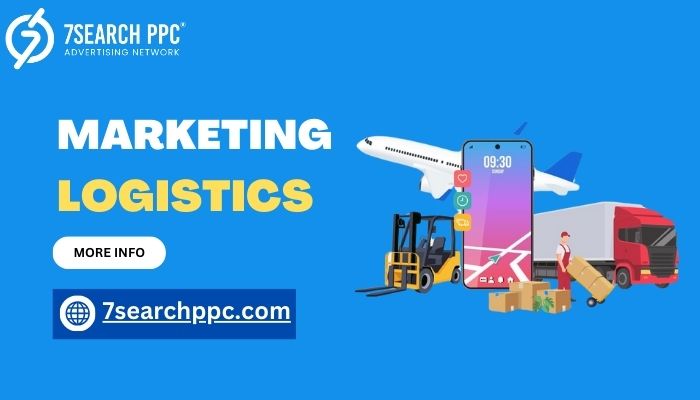Marketing logistics, often termed as supply chain management, is the process of planning, implementing, and controlling the efficient, cost-effective flow and storage of goods, services, and related information from point of origin to point of consumption for the purpose of conforming to customer requirements. It bridges the gap between production and market consumption, ensuring that products reach customers timely and in good condition. Here's an in-depth look at how marketing logistics can help your business thrive.
Introduction to Marketing Logistics
What is Marketing Logistics?
Marketing logistics encompasses a range of activities, including transportation, warehousing, inventory management, order processing, and distribution network design. It ensures that products are available where and when customers need them, enhancing customer satisfaction and business efficiency.
Importance of Marketing Logistics
Effective marketing logistics is crucial for maintaining a competitive edge. It helps businesses meet customer demands promptly, reduce operational costs, and improve overall service quality. In today's fast-paced market, where customer expectations are higher than ever, having a robust logistics strategy is essential.
Key Components of Marketing Logistics
Transportation Management
Transportation is the backbone of logistics. It involves moving products from manufacturers to warehouses and eventually to customers. Efficient transportation management reduces costs and ensures timely delivery.
Warehousing
Warehousing involves storing goods until they are needed. Effective warehousing strategies optimize space, reduce handling costs, and ensure that products are kept in good condition.
Inventory Management
Inventory management ensures that businesses have the right amount of stock at the right time. It involves balancing the costs of holding inventory with the need to meet customer demand promptly.
Order Processing
Order processing is the system used to receive, track, and fulfill customer orders. Efficient order processing systems improve accuracy and speed, enhancing customer satisfaction.
Distribution Network Design
Designing a distribution ad network involves determining the best locations for warehouses and distribution centers to minimize costs and delivery times. It also includes choosing the best routes and methods for transportation.
Benefits of Effective Marketing Logistics
Improved Customer Satisfaction
Effective logistics ensures that customers receive their orders on time and in good condition, leading to higher satisfaction levels. This can result in repeat business and positive word-of-mouth referrals.
Cost Reduction
Efficient logistics can significantly reduce operational costs by optimizing transportation routes, reducing storage costs, and minimizing inventory holding costs.
Competitive Advantage
Businesses with superior logistics capabilities can offer faster and more reliable delivery services than their competitors, providing a significant competitive advantage.
Increased Efficiency
Streamlined logistics processes improve overall business efficiency by reducing waste, speeding up order fulfillment, and improving inventory management.
Better Supplier Relationships
Efficient logistics can enhance relationships with suppliers by ensuring timely order placements and payments, leading to more favorable terms and better service.
Implementing Marketing Logistics in Your Business
Analyzing Current Logistics Operations
The first step in improving marketing logistics is to analyze your current operations. Identify areas where inefficiencies exist and where improvements can be made.
Setting Clear Objectives
Define what you want to achieve with your logistics strategy. This could include reducing delivery times, cutting costs, improving customer satisfaction, or expanding your distribution network.
Investing in Technology
Modern logistics relies heavily on technology. Invest in software for inventory management, order processing, and transportation management to streamline your operations.
Training and Development
Ensure that your staff are well-trained in logistics ads processes and the use of relevant technology. Continuous training and development can help keep your team up-to-date with the latest best practices.
Collaborating with Partners
Work closely with logistics partners, such as suppliers, carriers, and third-party logistics providers, to optimize your supply chain.
Monitoring and Improving
Continuously monitor your logistics performance using key performance indicators (KPIs) such as delivery times, order accuracy, and inventory levels. Use this data to make ongoing improvements.
Challenges in Marketing Logistics
Increasing Costs
Rising transportation and labor costs can significantly impact logistics operations. Businesses need to find ways to mitigate these costs while maintaining service quality.
Supply Chain Disruptions
Natural disasters, political instability, and other unforeseen events can disrupt supply chains. Having contingency plans and a flexible logistics network can help mitigate these risks.
Technological Integration
Integrating new technologies into existing systems can be challenging and costly. However, the benefits of improved efficiency and reduced costs often outweigh the initial investment.
Sustainability Concerns
Consumers and regulators are increasingly demanding sustainable logistics practices. Businesses need to find ways to reduce their environmental impact, such as using eco-friendly packaging and optimizing transportation routes to reduce emissions.
Meeting Customer Expectations
Today's customers expect fast, reliable, and affordable delivery services. Meeting these expectations while managing costs and maintaining quality can be challenging.
Conclusion
Marketing logistics is a critical component of modern business operations. By ensuring that products are available where and when customers need them, businesses can enhance customer satisfaction, reduce costs, and gain a competitive edge. Implementing effective logistics strategies requires a thorough understanding of current operations, clear objectives, investment in technology, and ongoing monitoring and improvement. By staying abreast of the latest trends and overcoming challenges, businesses can leverage marketing logistics to drive growth and success.
FAQs
What is marketing logistics?
Marketing logistics, also known as supply chain management, involves planning, implementing, and controlling the efficient flow and storage of goods, services, and information from the point of origin to the point of consumption to meet customer requirements.
Why is marketing logistics important for my business?
Marketing logistics is crucial because it ensures timely delivery of products, reduces operational costs, enhances customer satisfaction, and provides a competitive advantage. Efficient logistics operations lead to improved business efficiency and better supplier relationships.
How can marketing logistics improve customer satisfaction?
Marketing logistics improves customer satisfaction by ensuring that products are delivered on time, in good condition, and at the right location. Efficient logistics operations lead to faster order fulfillment, accurate deliveries, and better overall service quality.






Comments